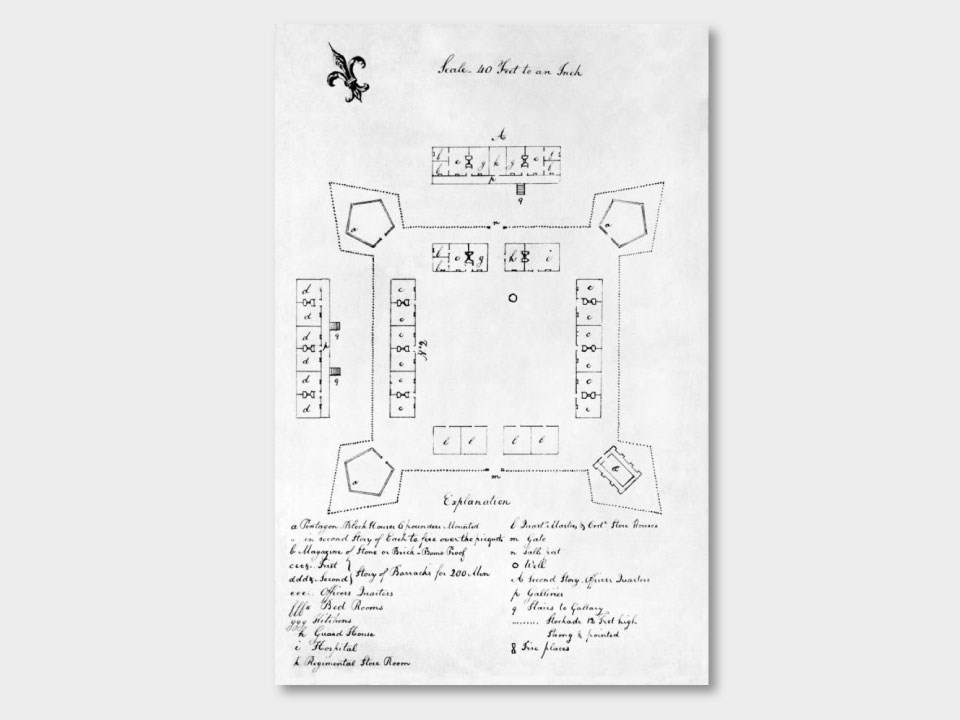Last updated: September 16, 2022
Article
Fort Fayette's role in the Lewis and Clark Expedition

Library and Archives Division, Historical Society of Western Pennsylvania
Built along the banks of the Allegheny River, Fort Fayette was constructed in 1792 at the request of General Anthony Wayne to protect the Pittsburgh area from the Miami Indians who had just won a decisive battle against American troops in the Ohio Valley.
Later, this comparatively unknown stockade fort served as headquarters for Wayne's Legion and was at one time headquarters for the Army of the United States. Besides protecting the town from attacks, it also served to safely guard the stores of ammunition kept here for the western posts. It’s for this reason that Meriwether Lewis had goods, supplies, and munitions from both Philadelphia and Harpers Ferry delivered to and retained here while the keelboat was being constructed.
In the April 1927 issue of “Western Pennsylvania Historical Magazine,”
Historian Mrs. Elvert Davis described the fort as “standing within an inclosure composed of large, pointed stakes fifteen or sixteen feet high. There were four wooden hexagonal towers on three of which were blockhouses; on the fourth was a powder magazine of brick.”
According to Mrs. Davis, the fort was never officially named Fort Lafayette, even though that was the desire of Major Isaac Craig, the Deputy Quartermaster and Military Storekeeper who oversaw construction. Craig’s naming request crossed paths with the order from the War Department which specified the name as Fort Fayette. Only historians of later periods would, incorrectly, refer to it as Lafayette.
Once Wayne and his Legion had ended the Northwest Indian War, the fort’s staffing was reduced significantly during the peaceful period that followed – perhaps with just a lieutenant, a sergeant, a corporal, and a few privates left to oversee it. It would have been during this quiet period when Meriwether Lewis visited in 1803.
However, when the War of 1812 began, Fort Fayette once again became a very busy place. Recruiting, drilling, receiving and shipping supplies, buying horses for the cavalry, and the retention of prisoners were all active duties of the fort until late 1814 or early 1815.
Soon after, it’s believed that Fort Fayette and surrounding government-owned lots were abandoned and offered to be sold, and the removal of the garrison probably took place in April or May 1815. Davis explained in her article that it’s unlikely that all the buildings or the stockade posts were quickly removed. An 1817 traveler in Pittsburgh listed the barracks as “still standing.”
The approximate site of the fort today is just west of the David L. Lawrence Convention Center in downtown Pittsburgh.
